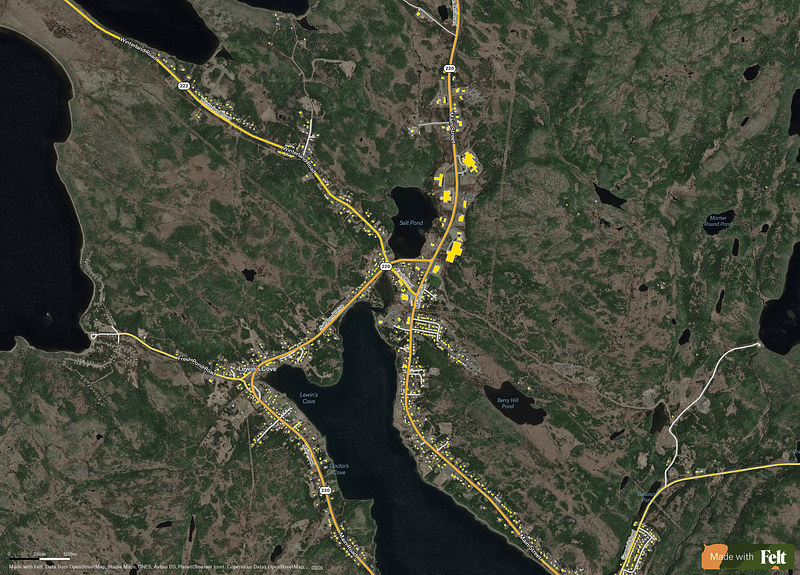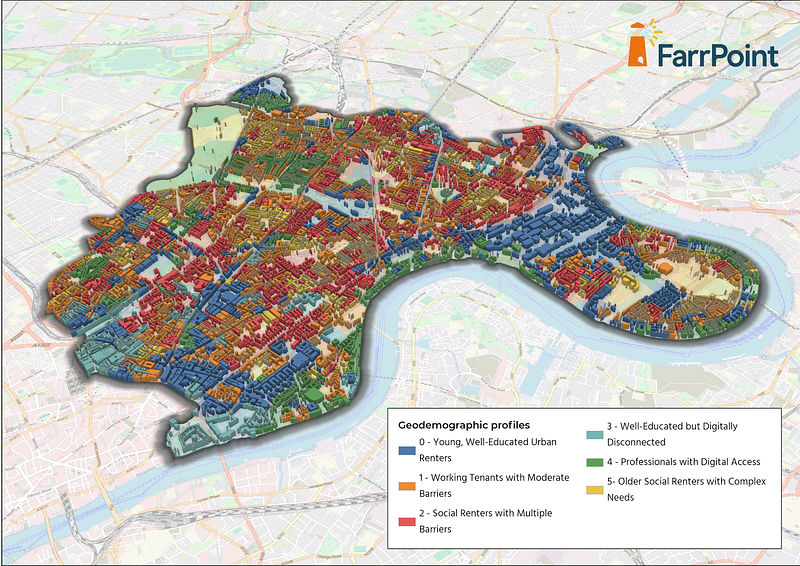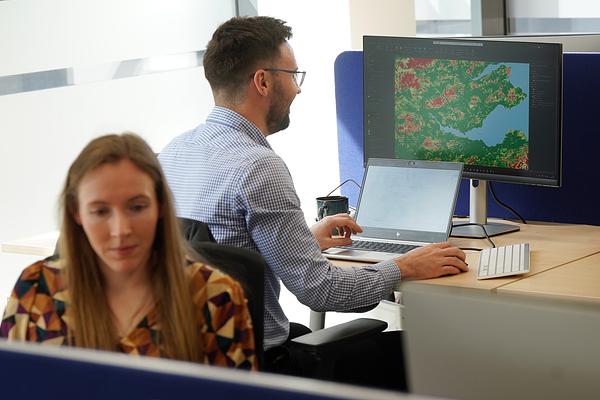
We’re always looking for innovative ways to support our clients through data and with AI tools developing rapidly, we sat down with our data specialists, (this will open in a new window)Chris, (this will open in a new window)Jordi, and (this will open in a new window)Nikki, to discuss where AI is making the biggest impact.

Let’s start with the basics: how is AI improving your data analysis day to day?
Chris: AI tools, including large language models (LLM) and machine learning algorithms, are beginning to automate the messiest and often time-consuming parts of our data workflows, like designing and updating coding scripts, matching inconsistent premise-level data addresses (for instance fuzzy matching) or extracting data from non-structured sources (like satellite images or PDF tables). This shift frees up consultants to focus on interpreting results and advising clients, which is great.
Nikki: These kinds of tasks used to take up a lot of time, and while we’ve always been keen on automation, AI supercharges our capabilities. Providing us with more time to interpret the results means our clients can get more value from our expertise in shedding light on what the data is telling us and providing insights.
Geospatial telecoms analysis is a core capability at FarrPoint. In what ways is AI enhancing your approach in this area?
Jordi: We’re exploring how Geospatial AI can streamline work too, especially when it comes to interpreting, summarising, and correlating different types of spatial data. For instance, using AI to interpret and compare (this will open in a new window)Ofcom Connected Nations data is now significantly quicker and more scalable.
Chris: Another good example is how we can make use of improvements in image classification to map and plan new infrastructure based on satellite imagery and remote sensing. The latest deep learning models allow more accurate extraction of features such as building outlines, object detection and land cover. We can use and apply these techniques to plan where to place and how to cost new infrastructure deployment (for instance, fibre networks), or to infill missing data, such as property locations in regions around the world where authoritative data is not available. This information is available at a global level and with increased accuracy, enriching our analysis and insights.
Example of Land Classification data used in our cost modelling
.png)
Global building outline data from Daylight

Would you say AI can provide more predictive insights and help plan ahead?
Nikki: Absolutely. Most analysis in our space is still descriptive; it tells you what’s happened or what’s happening now. But with AI models we have options available to identify patterns and predict future trends.
Jordi: This kind of predictive analysis helps clients think ahead. Instead of reacting to problems, they can start planning for them before they arise. As models improve, we’re seeing more dynamic forecasting; tools that adjust in real time as new data becomes available. Predictive AI also opens the door to scenario modelling, allowing us to test different interventions and explore how outcomes might change under various conditions. It’s not just about seeing the future but being better prepared for it.
Can you give an example of how AI is helping make digital strategies more targeted?
Chris: One exciting area is digital inclusion. With smarter segmentation and predictive modelling, we’re getting closer to tailoring interventions and digital inclusion strategies to the specific needs of neighbourhoods, even down to the community level.
Jordi: It means we can identify where an intervention will have the greatest impact - and equally, where it might not work. Our work with Tower Hamlets is one example where AI has helped highlight these patterns. We used machine learning algorithms to segment the population into groups based on their digital exclusion factors, this allowed us to identify the areas with the highest risk. This type of approach is helping us deliver bespoke strategies, rather than one-size-fits-all.
3D view with the outline of the buildings in Tower Hamlets Study

So, with these AI tools at your fingertips, where do humans still add the most value?
Jordi: AI is great for processing or visualising data, but it still falls short when it comes to understanding context and nuance. It can’t navigate the complexity of stakeholder requirements or the local knowledge that often shape a successful project.
Nikki: That’s especially important as we move to more predictive work. AI can help identify patterns in historical data and forecast potential issues or gaps. But turning this into predictions and meaningful action still relies on our experience and understanding of the wider landscape and marketplace.
Chris: Exactly. AI can tell you what might happen, but not why it matters or what to do about it. That’s where we come in. It’s not about automating decision-making, it’s about supporting smarter decisions. We’re using AI to strip out repetitive tasks and free up more time for that strategic, client-focused thinking.

Final thoughts—how would you sum up AI’s role in the future of your connectivity work?
Jordi: It’s easy to get swept up in the hype, and there’s no doubt AI is evolving rapidly and unlocking powerful new capabilities. But it is also important to remember AI is a tool, not a decision maker. Its real value comes when it is paired with human insight and strategic thinking. Understanding our clients, policy, and procurement environments, as well as client drivers, remains a very human task.
Chris: For us, it’s not about churning out the same analysis for different clients, or getting AI to write our reports, but evolving to be more efficient in what we do. This includes removing time-consuming manual steps that frees up more time for our experts to focus on the ‘so what’ for clients; from providing our insights and strategies that are data-driven and meaningful.
Interested in finding out how AI could help your projects or operations?
Get in touch with our team to learn more.
Connectivity is important. It drives business and society, bringing communities and commerce together. That's why we use our insight and experience to connect people and business.